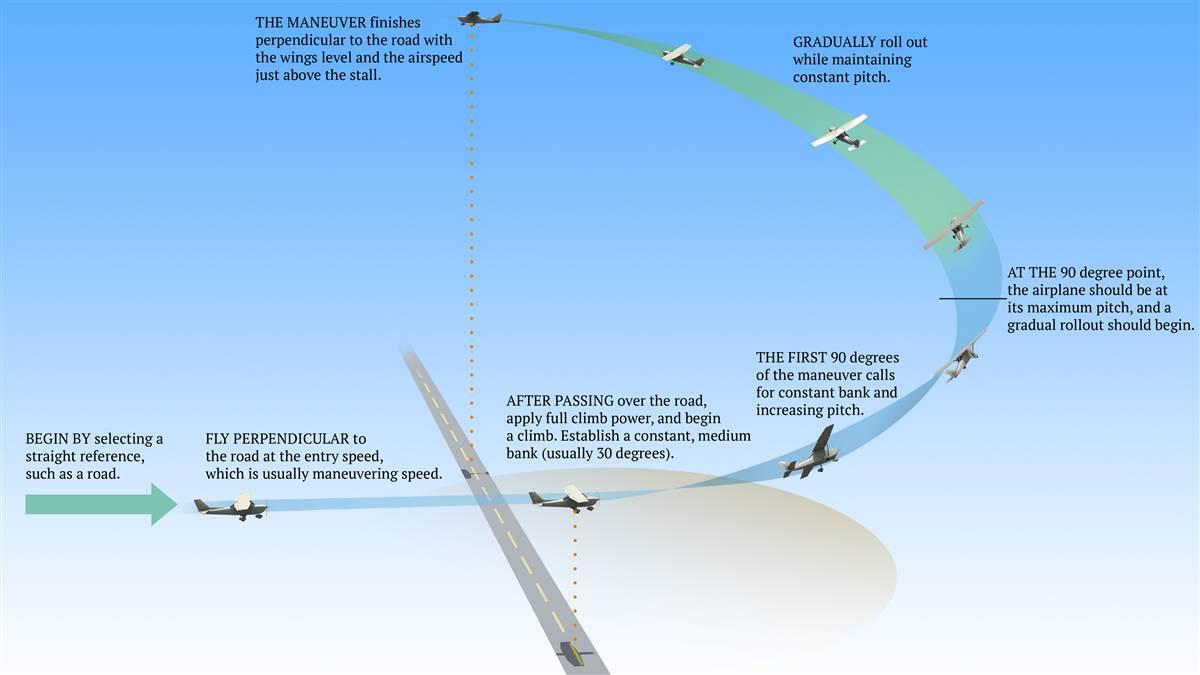
After advancing past the private pilot certificate, the FAA introduces increasingly more complex maneuvers. Assuming you rise to the challenge of getting more certificates and ratings, a commercial certificate may be in your future. It’s an excellent challenge, and useful even if you don’t plan to charge for your flying services.
One of the performance maneuvers required on the commercial checkride is a maximum-performance 180-degree climbing turn called a chandelle. Although it seems easy at the outset, performing a chandelle correctly requires the pilot to constantly reevaluate the current condition and adjust mid-maneuver. For this reason, it’s important to remember that it’s a visual maneuver, and must be performed using outside references. The chandelle appears as one fluid motion, but it’s broken down into two distinct parts.
Practical Test Standards
Objective: To determine that the applicant:
- Exhibits knowledge of the elements related to chandelles.
- Selects an altitude that will allow the maneuver to be performed no lower than 1,500 feet agl (460 meters).
- Establishes the recommended entry configuration, power, and airspeed.
- Establishes the angle of bank at approximately 30 degrees.
- Simultaneously applies power and pitch to maintain a smooth, coordinated climbing turn to the 90-degree point, with a constant bank.
- Begins a coordinated constant rate rollout from the 90-degree point to the 180-degree point, maintaining power and a constant pitch attitude.
- Completes rollout at the 180-degree point, just above a stall airspeed, and maintaining that airspeed momentarily avoiding a stall.
- Resumes straight and level flight with minimum loss of altitude.
| 1. |
Begin by selecting a straight reference, such as a road, and fly perpendicular to the it at the entry speed, which is usually maneuvering speed. |
| 2. |
After passing over the road, apply full climb power, and begin a climb. Establish a constant, medium bank (usually 30 degrees). |
| 3. |
The first 90 degrees of the maneuver calls for constant bank and increasing pitch. |
| 4. |
At the 90-degree point, the airplane should be at its maximum pitch, and a gradual rollout should begin. |
| 5. |
Gradually roll out while maintaining constant pitch. |
| 6. |
The maneuver finishes perpendicular to the road with the wings level and the airspeed just above the stall. |



